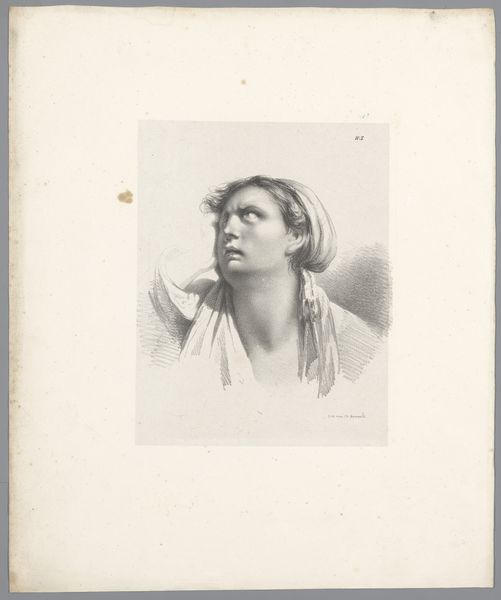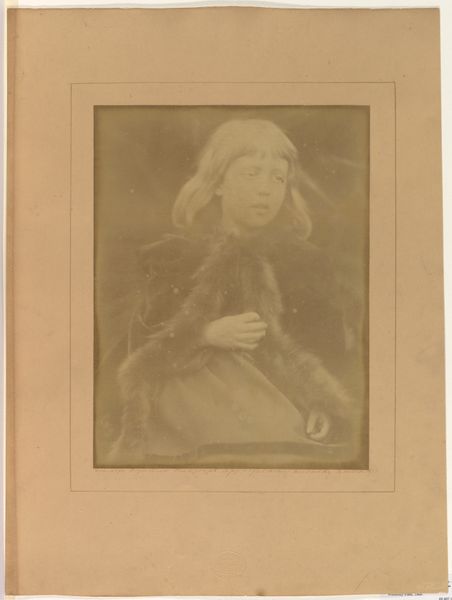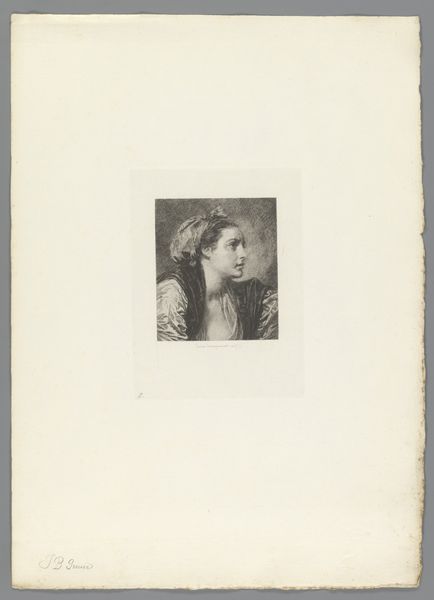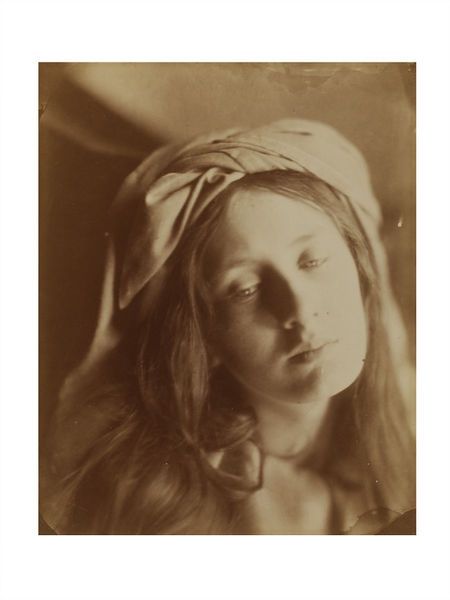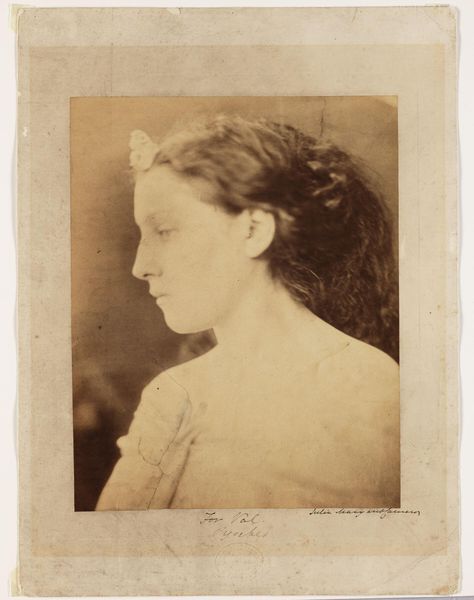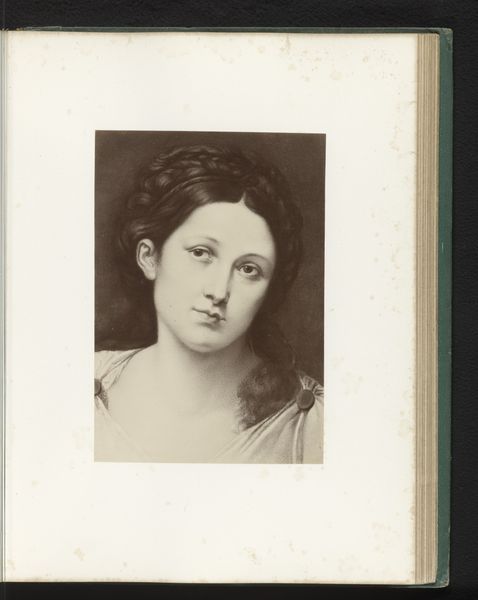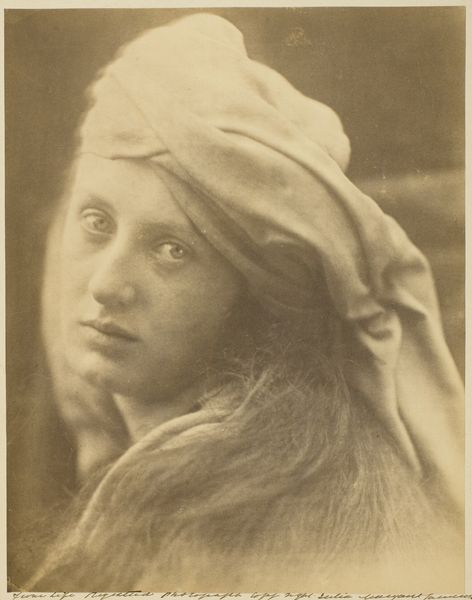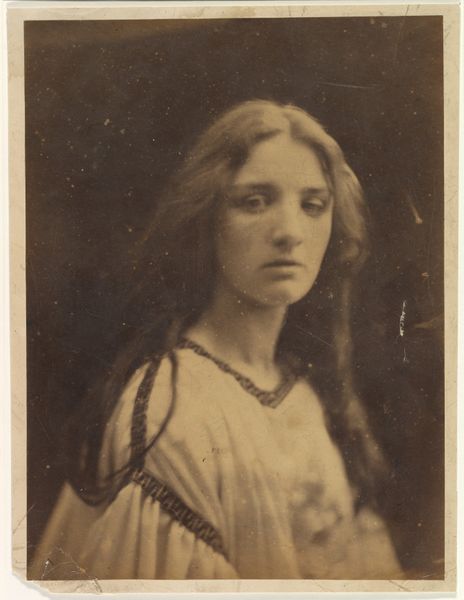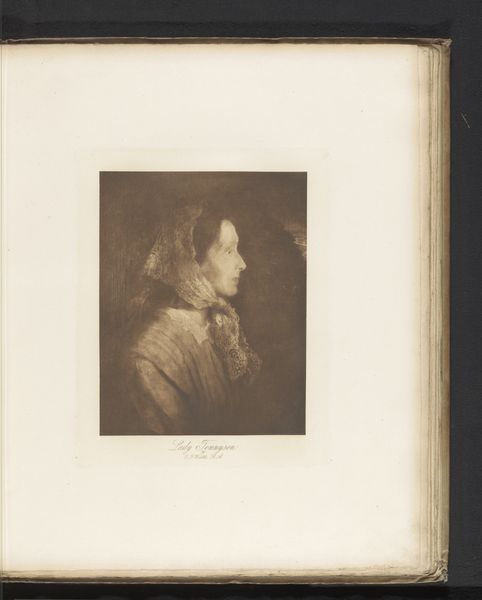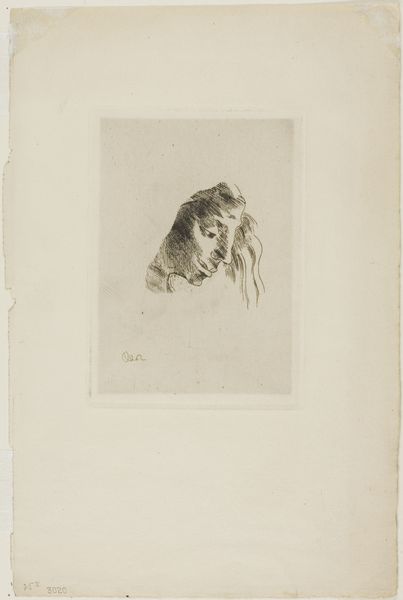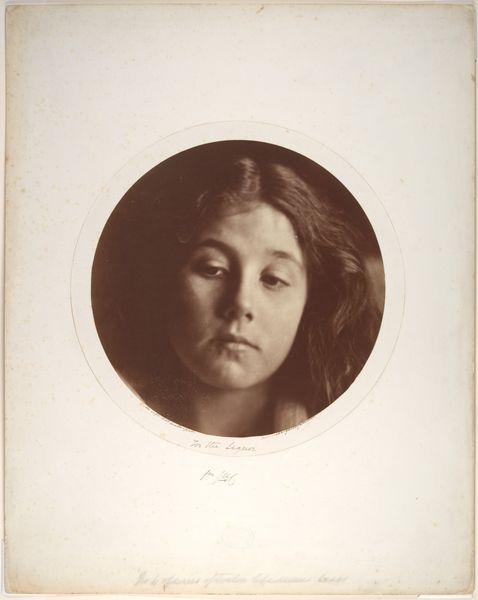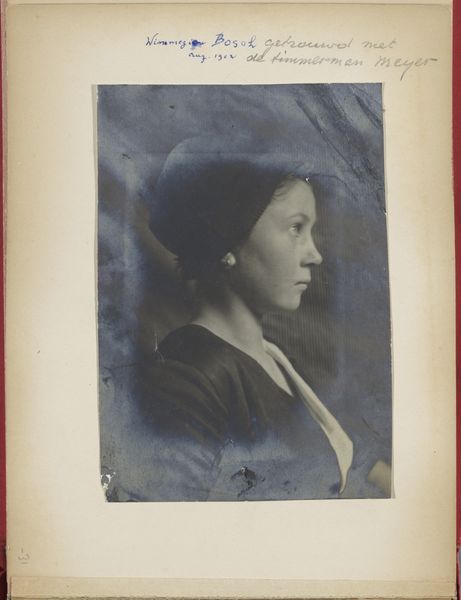
Dimensions: 34.6 x 26.3 cm. (13 5/8 x 10 3/6 in.)
Copyright: Public Domain
Editor: Here we have Julia Margaret Cameron's "Beatrice" from 1866, a gelatin-silver print currently housed at the Met. It's such an ethereal image; she looks almost like a pre-Raphaelite painting come to life! What stands out to you when you look at it? Curator: Immediately, I see Cameron’s deliberate attempt to elevate photography to the status of “high art,” something fiercely debated during this period. The soft focus, which was often criticized, can be interpreted as a rejection of purely mechanical reproduction in favor of artistic expression, consciously emulating painting. What role do you think gender played in her aesthetic choices? Editor: That's a great point! Perhaps as a female artist in a male-dominated field, she was consciously creating a softer, more "feminine" aesthetic to gain acceptance, or perhaps, to subvert expectations in some way? It seems like the role of women as portrayed in art and photography, combined with the role of women making art is all tangled up here. Curator: Exactly. The artistic circles in which Cameron worked were very aware of Pre-Raphaelite ideals. Note the title, referencing Dante’s muse. This bestows upon her sitter an idealized beauty and spiritual aura, aligning her with literary and artistic traditions. Editor: I didn’t know the sitter was alluding to Dante. So, the photo is both about female beauty and the way art shapes our perception of it? Curator: Precisely. The politics of imagery here are layered. Consider how photographic portraits, initially a domain of the wealthy, gradually became a tool for shaping public perceptions and even constructing personal narratives. The institutional acceptance of photographs like “Beatrice” into museum collections signaled a profound shift. Editor: It's amazing to think about how Cameron was actively shaping not just an image, but also photography's place in the art world. Now I understand how revolutionary her choices were. Curator: It’s a powerful testament to the impact artists can have on transforming social perceptions through art and its institutions.
Comments
No comments
Be the first to comment and join the conversation on the ultimate creative platform.
